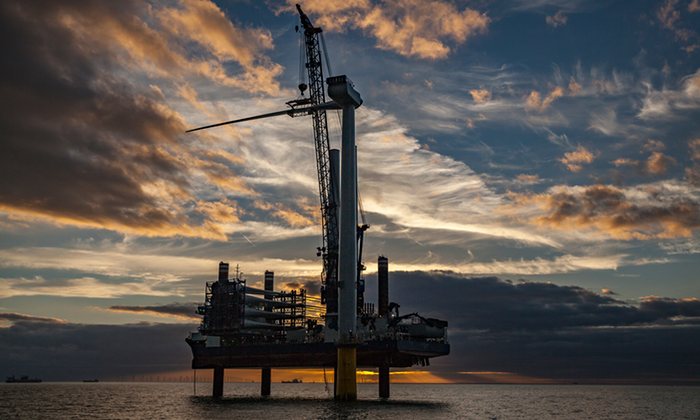On a sunny October morning, our boat passes the run-down relicts of Liverpool’s maritime past and heads down the river Mersey and into the Irish Sea. As we steam offshore, I see in the distance a cluster of tall structures that soon reveal themselves to be towers of a wind turbine array. Arriving at the windfarm, six miles offshore, the turbines rise as high as 650ft, taller than the tallest church in the world. Each of the turbines’ three shiny metallic rotor blades is nearly 300ft long.
“A single rotation of an eight-megawatt turbine will cover the daily electricity consumption of an average British household,” says Benj Sykes, vice president of Dong Energy Wind Power, the company that is constructing and co-owns this wind project, as the boat rocks in five-foot swells.
Workers have been busy at the Burbo Bank extension, named for this patch of the Irish Sea, since June, using gigantic cranes to drive foundations 50ft into the sea floor. With a design capacity of eight megawatts each, the 32 turbines are the most powerful ever installed at a commercial offshore windfarm. Once the rotors start spinning later this year, the Burbo Bank windfarm will be able to power 230,000 households – enough to run Liverpool city, with its 466,000 inhabitants.

